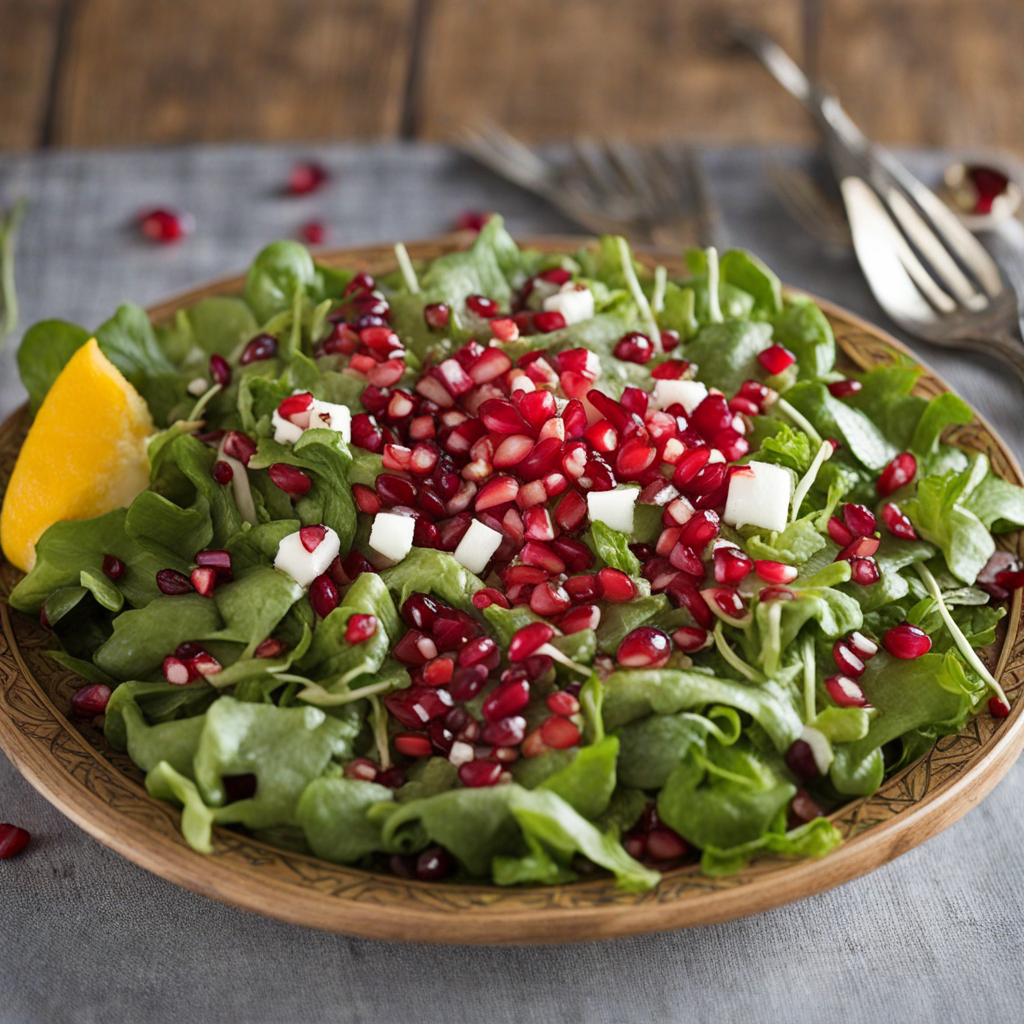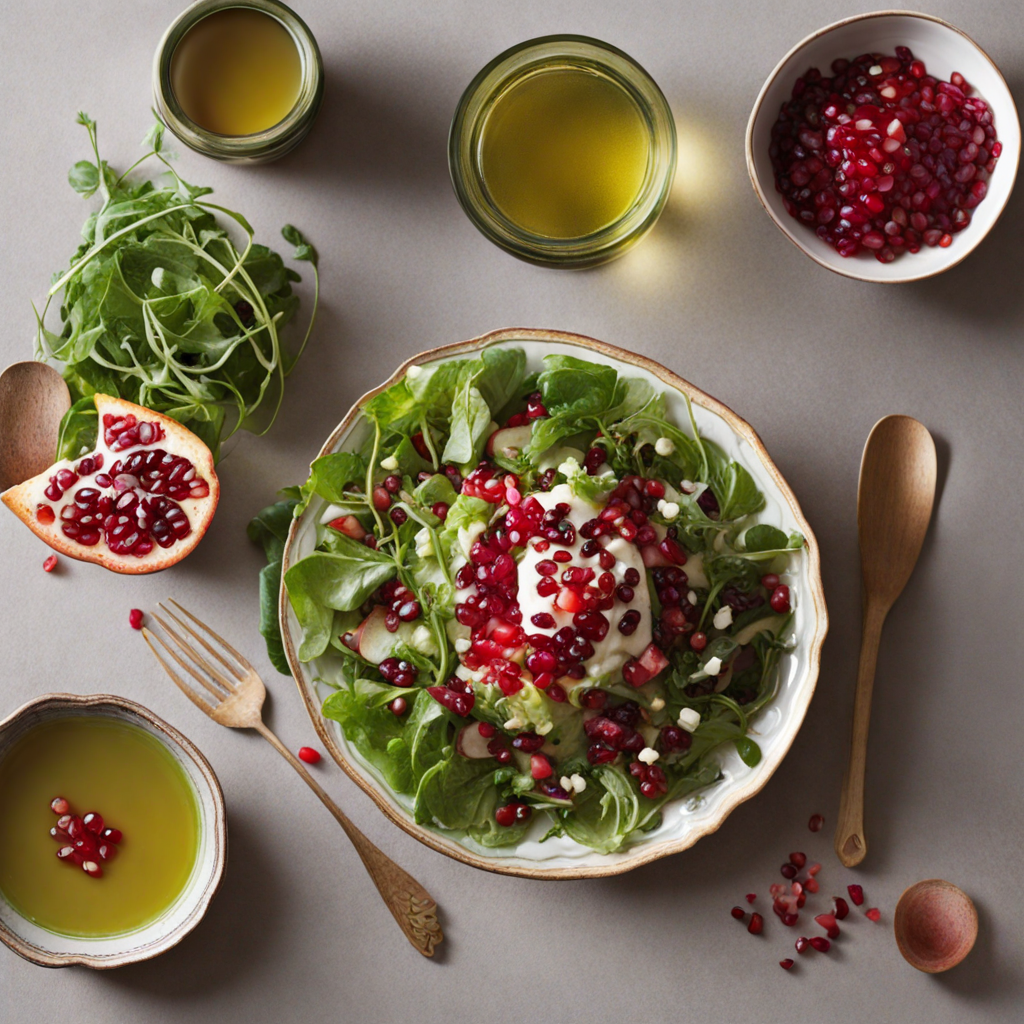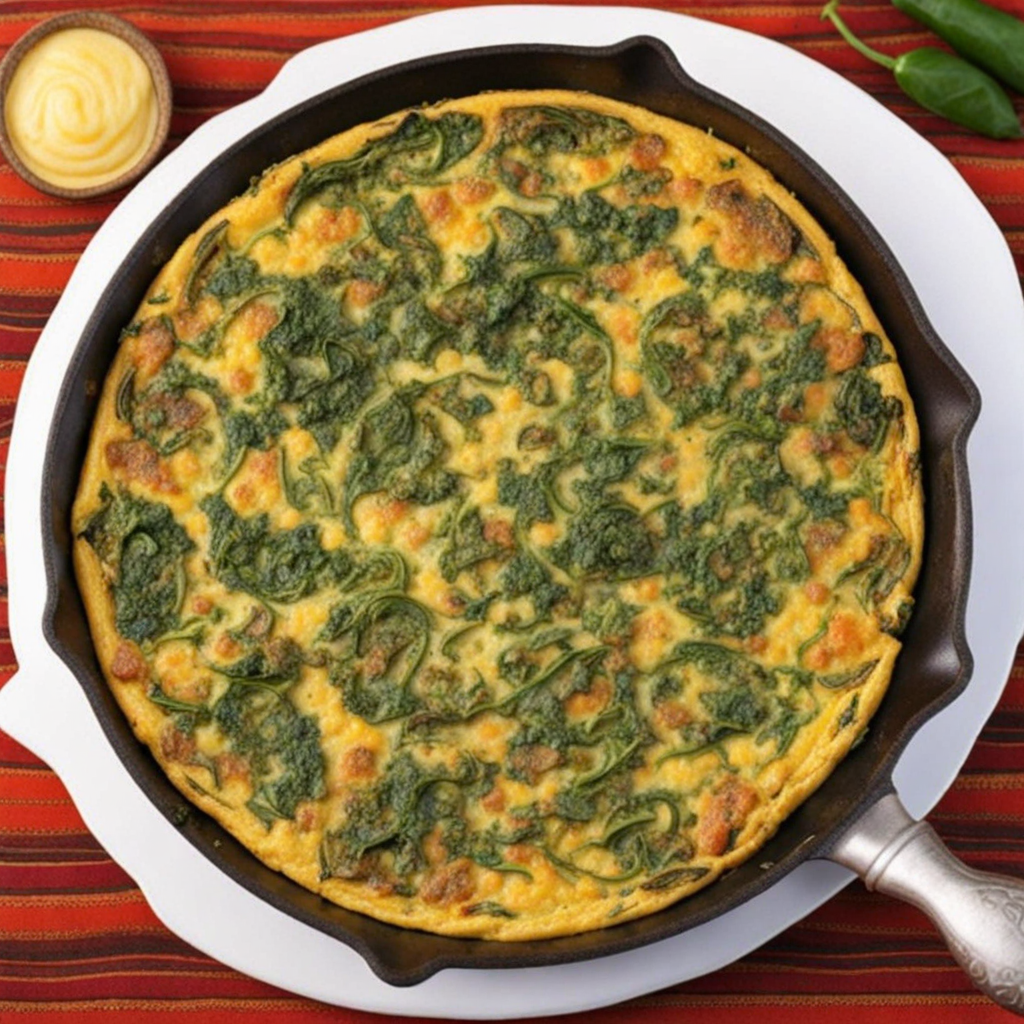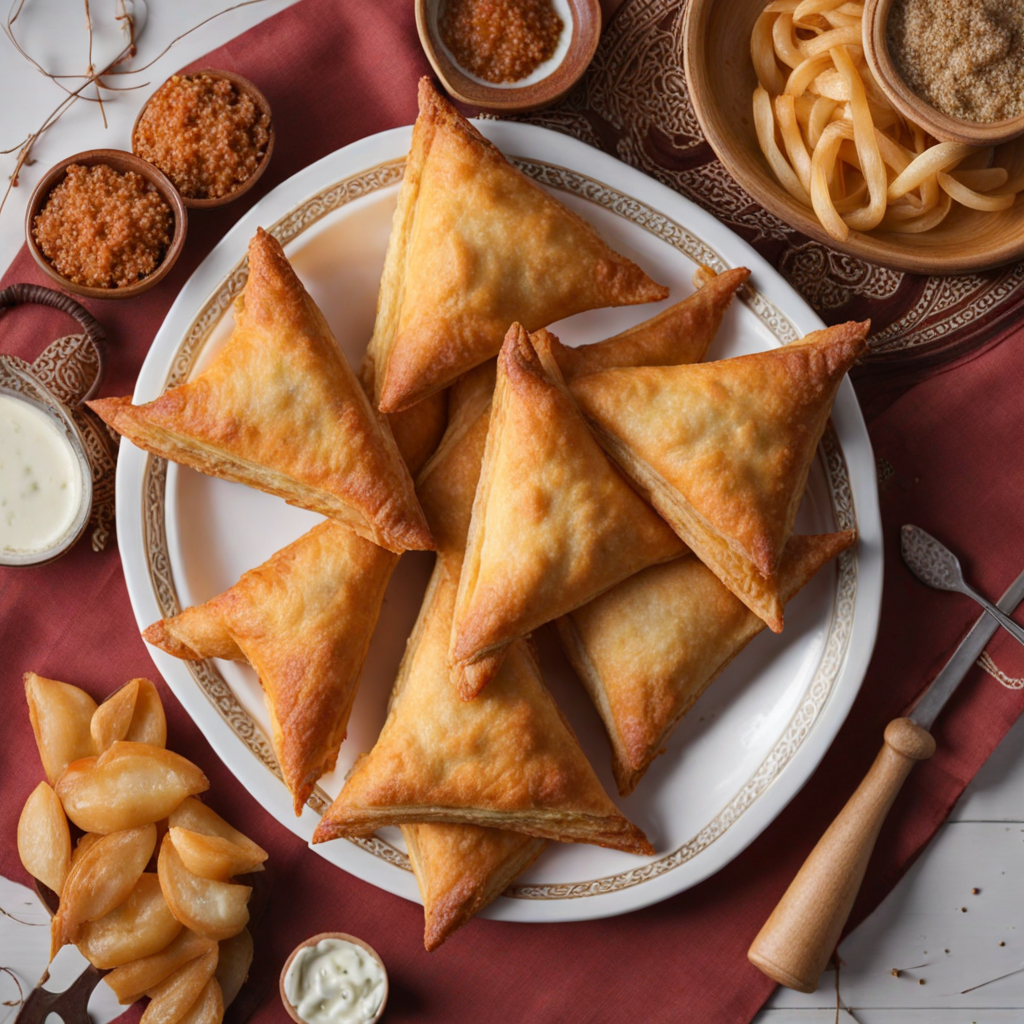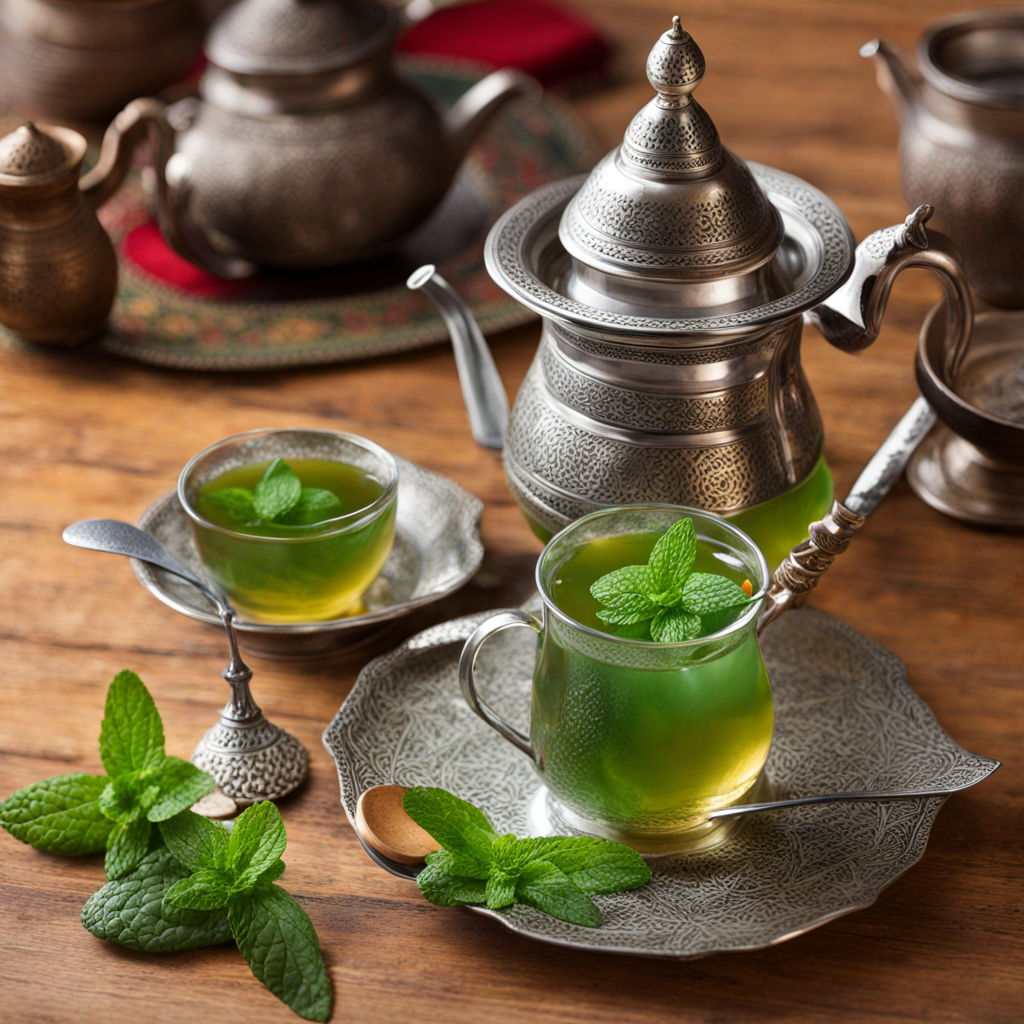Pomegranate Salad
Pomegranate Salad, a vibrant dish from Morocco, is a delightful celebration of flavors and colors that captures the essence of the region's culinary richness. This refreshing salad typically combines juicy pomegranate seeds with crisp cucumbers, sweet bell peppers, and aromatic herbs like mint and parsley. The pomegranate seeds, glistening like jewels, add a burst of sweetness and tartness, contrasting beautifully with the coolness of the cucumbers and the crunch of the peppers. Each bite offers a delightful medley of textures, making it a feast for both the eyes and the palate. The dressing for Pomegranate Salad often features a balance of tangy lemon juice and fragrant olive oil, enhancing the natural flavors of the fresh ingredients. A hint of cumin or cinnamon may be added, providing a warm undertone that reflects Morocco's spice-rich culinary tradition. This salad is not only refreshing but also packed with nutrients, making it a healthy addition to any meal. Its bright colors and bold flavors make it an appealing starter or side dish, perfect for sharing among friends and family. Pomegranate Salad embodies the Moroccan spirit of hospitality and communal dining. Its lively presentation makes it a centerpiece at gatherings, inviting everyone to dig in and enjoy. As you savor the layers of taste—sweet, savory, and tangy—you'll find yourself transported to the bustling souks and sun-drenched landscapes of Morocco. This dish is a wonderful exploration of new flavors, offering a unique twist to traditional salads and leaving a lasting impression on those who dare to indulge.
How It Became This Dish
The History of سلطة الرمان (Pomegranate Salad) in Moroccan Cuisine Origins and Ingredients سلطة الرمان, or pomegranate salad, is a vibrant and flavorful dish deeply rooted in Moroccan culinary traditions. The origins of this salad can be traced back to the rich agricultural history of Morocco, a land renowned for its diverse climate and fertile soil, which has allowed for the cultivation of a variety of fruits, vegetables, and spices. Among these, the pomegranate stands out not only for its unique taste but also for its cultural and historical significance. Pomegranates are believed to have originated in the region spanning from modern-day Iran to northern India, and they have been cultivated for thousands of years. They traveled westward through trade routes, eventually finding their way to the Mediterranean basin, where they flourished in the Moroccan landscape. Today, pomegranates are grown throughout the country, thriving in the warm, sunny climate. The salad typically features a combination of fresh, seasonal ingredients, such as chopped greens (often lettuce or parsley), diced cucumbers, tomatoes, and onions, all topped with the jewel-like seeds of the pomegranate. The bright red arils not only provide a burst of sweetness but also symbolize prosperity and fertility, making the salad a popular choice for festive occasions and celebrations. Cultural Significance In Moroccan culture, food is more than just sustenance; it is a reflection of social identity, tradition, and community. The use of pomegranates in Moroccan cuisine is steeped in symbolism. Known as "نارنج" (narang), pomegranates are often associated with abundance, fertility, and good fortune. They appear in various forms during celebrations, including weddings and religious holidays. Pomegranate salad, with its vibrant colors and refreshing flavors, is often served as a side dish during festive meals or family gatherings. It embodies the Moroccan ethos of sharing and hospitality, where the preparation and enjoyment of food bring people together. The salad not only delights the palate but also serves as a visual feast, showcasing the artistry of Moroccan culinary practices. Development Over Time The development of سلطة الرمان reflects the broader evolution of Moroccan cuisine, which has been influenced by various cultures and traditions throughout history. The Berber, Arab, Jewish, and French influences have all left their marks on Moroccan gastronomy, creating a unique culinary landscape that is both diverse and harmonious. During the medieval period, the Moors brought sophisticated culinary techniques to Morocco, integrating spices such as cinnamon, cumin, and coriander into their dishes. These spices, along with the use of fresh herbs and local produce, helped to elevate simple salads to complex flavor profiles. The inclusion of pomegranate in salads is a testament to this tradition, as it adds both sweetness and acidity, balancing the flavors of the dish. In the 19th and 20th centuries, Moroccan cuisine began to gain international recognition, with chefs and food writers highlighting the intricacies of its flavors and techniques. The rise of tourism played a significant role in the popularization of traditional Moroccan dishes, including pomegranate salad. Travelers seeking authentic culinary experiences were drawn to the colorful markets, where fresh produce was readily available. As a result, recipes for pomegranate salad began to spread beyond Morocco’s borders, inspiring adaptations in various culinary contexts. In contemporary times, the salad has seen a resurgence in popularity, particularly among health-conscious eaters. The nutritional benefits of pomegranates, which are rich in antioxidants, vitamins, and minerals, have made them a sought-after ingredient in modern diets. Chefs and home cooks alike have embraced the salad, often experimenting with additional ingredients such as nuts, feta cheese, or citrus dressing to create innovative variations that honor traditional flavors while appealing to diverse palates. Modern Interpretations and Global Influence Today, سلطة الرمان can be found on menus in Moroccan restaurants around the world, as well as in homes where Moroccan cuisine is celebrated. The dish has transcended its geographical boundaries, becoming a symbol of Moroccan hospitality and culinary art. Variations of the salad have emerged, incorporating different elements based on regional preferences or dietary trends, yet the essence of the dish remains intact. In many modern interpretations, the salad is often enhanced with other ingredients, such as roasted nuts (like almonds or walnuts), crumbled feta, or even a drizzle of honey for added sweetness. These adaptations reflect the global influence on Moroccan cuisine, allowing the salad to cater to a wider audience while maintaining its roots. Moreover, the use of pomegranates has extended beyond salads. They are now featured in drinks, desserts, and savory dishes, showcasing their versatility. The popularity of pomegranate juice has soared, further elevating the fruit's status as a superfood and a staple in health-conscious diets. Conclusion سلطة الرمان is not just a salad; it is a vibrant representation of Moroccan culture, history, and the interplay of flavors that characterize its cuisine. From its ancient origins to its modern adaptations, pomegranate salad embodies the essence of Moroccan culinary traditions, celebrating the agricultural richness of the land and the communal spirit of sharing meals. As it continues to evolve and inspire, سلطة الرمان remains a cherished dish that connects generations, transcending time and borders while inviting all to partake in its deliciousness.
You may like
Discover local flavors from Morocco


